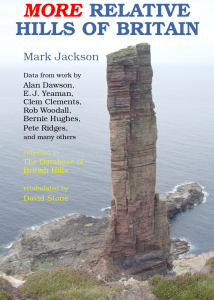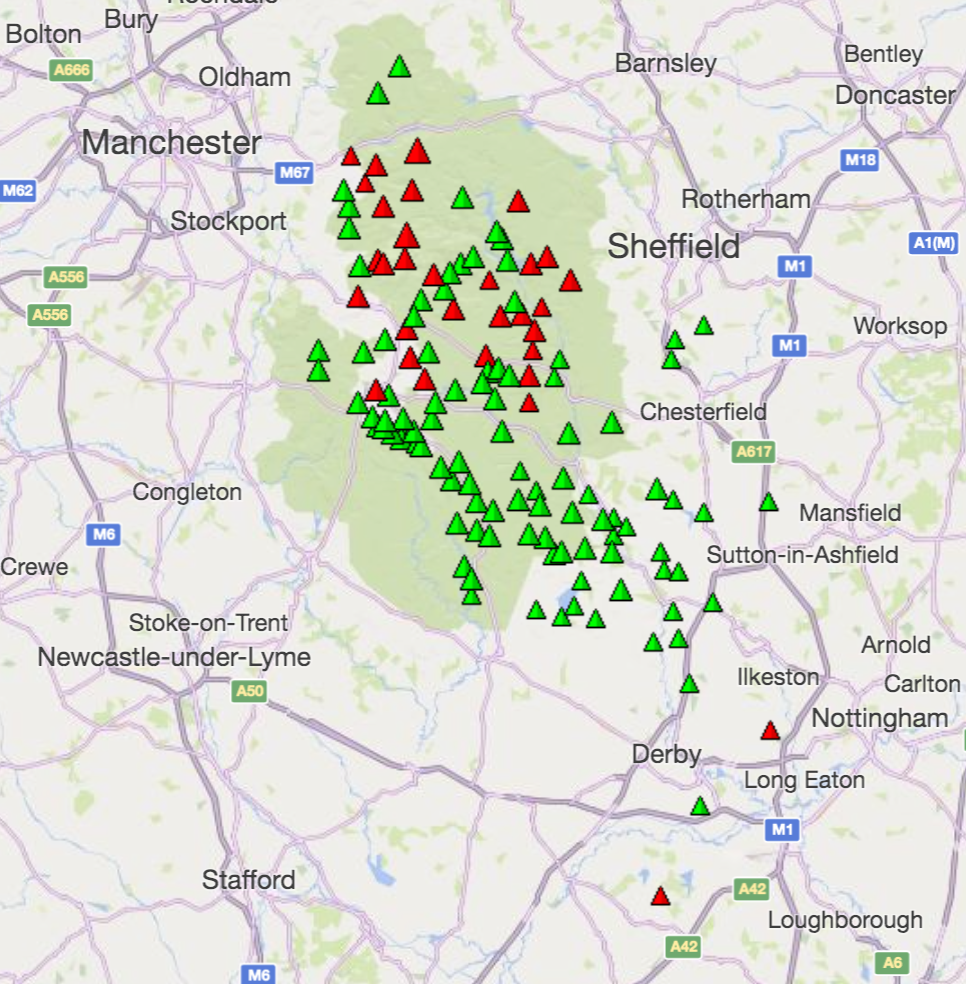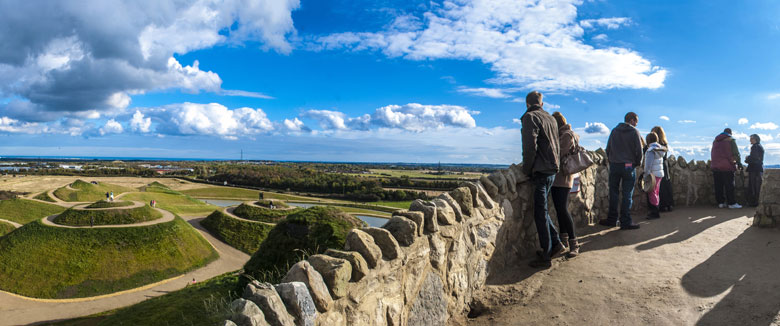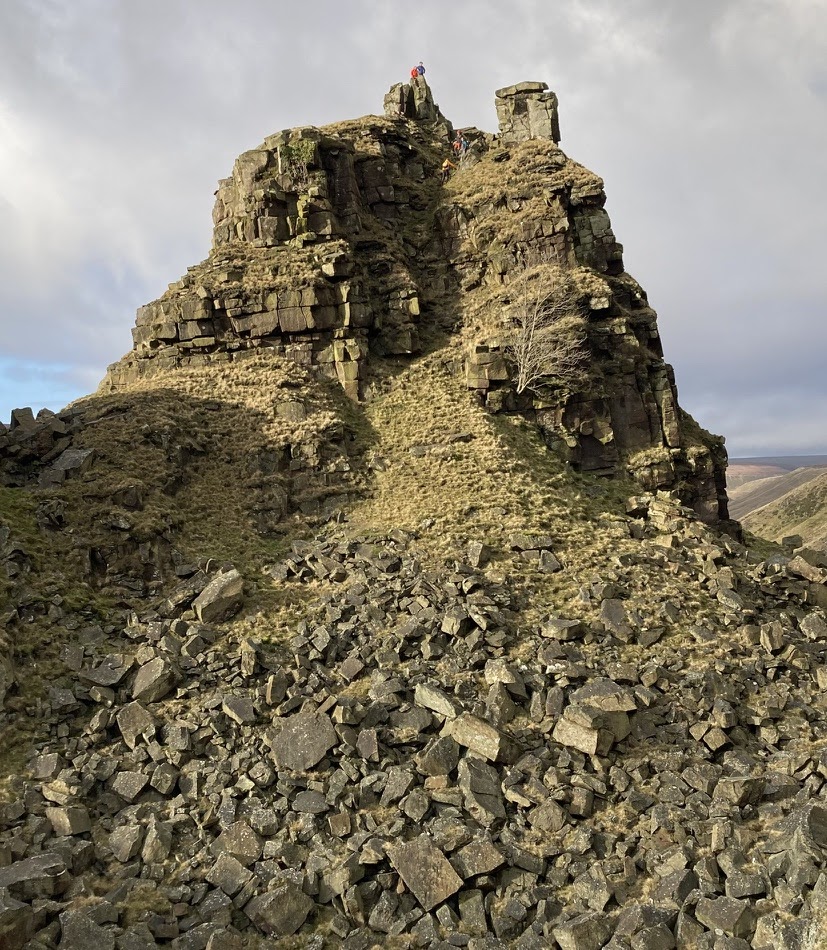The Tumps are one of the most popular metric hill lists that the Relative Hills Society has adopted for which we compare progress by hill baggers in our Halls of Fame.
An attraction of the Tumps is that they are diverse, with some having features of antiquity on their summit, some are man-made, some form rolling downland, while others are more challenging islands and sea stacks.
In this introduction, we explain what they are, how they originated, why they appeal, and give some suggestions of how to get started in visiting and logging them.
Definition - What is a Tump?
 Tumps are defined as British Hills with more than 30 metres of prominence.
Tumps are defined as British Hills with more than 30 metres of prominence.
Hill prominence refers to the relative height compared to surrounding hills. This explanation of hill prominence compares Tumps, which are sometimes abbreviated to P30s, with Humps (P100) and the Marilyns (P150).
So, the lists of Humps and Marilyns also include Tumps which have sufficient prominence. Or, if you prefer, the Humps and Marilyns are a subset of the Tumps with greater prominence.
Tumps are sometimes written as TuMPs (Thirty and upwards Metre Prominence), but Tump is usually used for simplicity. Likewise, Humps are hills with one hundred metres of prominence, sometimes written as HuMPs.
The SIBs (Significant Islands of Britain) list also includes Tumps since this definition uses a prominence of more than 30 metres and/or 30 hectares.
Tump also has a historic usage, with Wikipedia listing hills with Tump in their name, informing us that:
'Tump means a hillock, mound, barrow or tumulus. The Welsh words twmp and Twmpath may be related'.
The origin and history of Tumps
 Fifteen years after the publication of The Relative Hills, which introduces and catalogues The Marilyns, Mark Jackson published ‘More Relative Hills of Britain’. This is available as a free download, updated to 2010 with contributions from many collaborators in the Relative Hills of Britain community.
Fifteen years after the publication of The Relative Hills, which introduces and catalogues The Marilyns, Mark Jackson published ‘More Relative Hills of Britain’. This is available as a free download, updated to 2010 with contributions from many collaborators in the Relative Hills of Britain community.
More Relative Hills focused on The Humps, covering hills with a prominence of 100 metres, the next level of prominence down after The Marilyns (150 metres prominence) However, almost at the end of Mark’s book, he dropped in a bombshell. While researching the Humps, he could not resist checking out an even lower prominence level, those hills with a minimum drop on all sides of 30 metres. Thus, Table 38 in the book announced that there were 16,644 ‘Tumps’ and the damage was done!
It has been argued that the next step down after Humps should have been P50, but P30 was already well established for some older lists. Thirty metres of prominence formed the basis for two more RHSoc lists, the Simms (British hills which are 600m high with 30m of prominence) and the Dodds (British Hills between 500m and 600m high with 30m of prominence) which are subsets of the Tumps.
The initial spreadsheet of Tumps was managed for a while by Andrew Tibbetts, but around 2013, the Tumps were added to the Database of British and Irish Hills and then became much more accessible via the Hill Bagging website.
How many Tumps are there?
There are more than 17,000 Tumps in Great Britain. You can check the latest total and those local to you on the Hill Bagging (www.hill-bagging.co.uk) Tumps page, which gives a breakdown by Counties and Relative Hills Sections.

The Haroldstreet Tumps pages gives other options for visualising them, recording ascents and GPS waypoints.
There are usually over one hundred additions, relocations, renamings and deletions each year with ongoing surveying by RH Soc members and other enthusiasts. The latest changes to Tumps are recorded on the Tumps change register.
The appeal and challenge of the Tumps
The lower prominence of Tumps compared with Marilyns gives a wider geographical distribution of the Tumps, which are found throughout Great Britain. This appeals since there will always be more local Tumps that can be climbed with less travel than Marilyns. Their lower prominence means that they are more numerous than Marilyns in any county, so hill baggers tend to work at collecting all the local Tumps in nearby counties. Hill Bagging has a useful listing of Tumps by County.
Here are some examples, comparing the number of Marilyn and Tump hills by county:
- Derbyshire - 3 Marilyns, more than 130 Tumps
- Dorset - 3 Marilyns, more than 120 Tumps
- Denbighshire - 7 Marilyns, more than 90 Tumps
In some hillier counties, such as Cumbria or Powys, where there are more than 700 Tumps, they offer a significant challenge and new options to explore hills after the 70 Marilyns or 216 Wainwrights have been completed.
Tumps also offer a wider variety of summit features than other lists due to their modest height. As well as many earthworks and features of antiquity, you may also be drawn to visit man-made features such as Northumberlandia, The Lady of the North, or some spoil tips or bings in former mining areas.

Which is the most difficult Tump?
Since Tumps also include Marilyns, there are Tumps you will probably need a rope and partner to ascend, including the trickier Marilyns such as the sea stacks of St Kilda and The Inaccessible Pinnacle of Skye. Then there are smaller pinnacles, including hundreds of sea stacks, that qualify as Tumps, but not Marilyns. For example, in Derbyshire, Alport Castles requires an easy scramble and is more interesting to climb than many higher points on the moorland.

There are few other pinnacles in England that have sufficient drop to qualify as a Tump; for example, Pillar Rock only has a prominence of 15 metres. However, the Old Man of Mow, which we discuss on our Humps Hill List page is a Very Severe climb.
In Scotland, there are many sea stacks that are Tumps. Some are well-known and have been ascended, such as Am Buchaille near Sandwood Bay or the Old Man of Stoer. Others are unclimbed due to inaccessibility. Many islands, which belong to the SIBs (Significant Islands of Britain) list, are also challenging. There are also easier Tumps in Scotland, for which no ascents have been claimed.
Number of active Tump baggers
It is unlikely anyone will ever climb all 17,000 plus Tumps, but many hill baggers are active in bagging them on a county basis subject to access to some of the Tumps. Three people have completed all the Tumps in one hundred counties or more, with tens of people into double figures. For many, one or two counties will suffice. In Scotland and Wales, there have been few completions of Sections, for example, just 5 of the 139 Tumps in section 01A: Loch Tay to Perth and 4 in section 30E: Bala to Welshpool.
Adrian Rayner manages the Tumps Hall of Fame, which has quite a low entry-level of 2000 but with several levels above that. At the time of writing, eight baggers have passed the 5000 threshold and two are past 8000.
Geographical distribution in the UK
The Tumps have been subdivided in several ways, including counties, Relative Hills of Britain Marilyn sections, Topo sections, river catchments, multi-Tump islands and watershed lines. All these have provided much friendly rivalry among baggers seeking to be first to complete a subset, or to amass the largest collection of completed counties/sections/islands. The low-hanging fruit has mostly gone, and it is increasingly difficult to find a virgin set that can be completed without running into obstacles such as sea stacks, and/or bagging very large numbers of summits.
